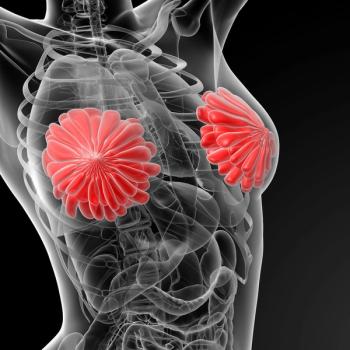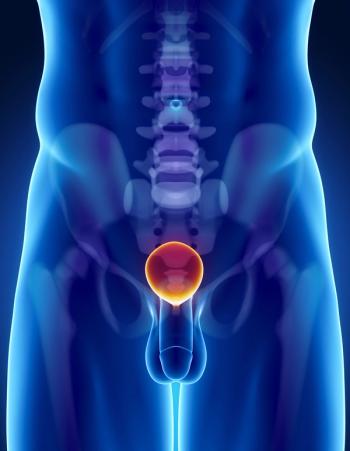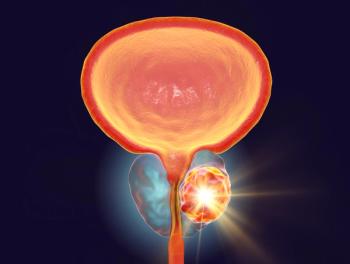
Oncology NEWS International
- Oncology NEWS International Vol 13 No 6
- Volume 13
- Issue 6
NCI Outlines Benefit Data of Physical Activity for Five Ca’s
BETHESDA, Maryland-Convincing evidence indicates that physical activity can significantly reduce the risk of colon and breast cancer, according to a newly released National Cancer Institute (NCI) fact sheet. Moreover, studies also suggest a link between exercise and a reduced risk of cancers of the prostate, lung, and endometrium. However, despite the documented cancer and other health benefits of exercise, "recent studies have shown that more than 60% of Americans do not engage in enough regular physical activity," NCI said. The new publication summarizes the evidence supporting the role of exercise in cancer risk reduction and the possible underlying biological mechanisms
BETHESDA, MarylandConvincing evidence indicates that physical activity can significantly reduce the risk of colon and breast cancer, according to a newly released National Cancer Institute (NCI) fact sheet. Moreover, studies also suggest a link between exercise and a reduced risk of cancers of the prostate, lung, and endometrium. However, despite the documented cancer and other health benefits of exercise, "recent studies have shown that more than 60% of Americans do not engage in enough regular physical activity," NCI said. The new publication summarizes the evidence supporting the role of exercise in cancer risk reduction and the possible underlying biological mechanisms
Colon Cancer
Physically active individuals can reduce their risk of developing colon cancer by 40% to 50%, with the higher reduction found among those people who are the most physically active.
"A decreased risk of colon cancer has been consistently reported for physically active men," the NCI report said. "Many studies have reported a reduction in colon cancer risk for physically active women. The relationship between physical activity in women, however, has been less consistent."
Exercise mostly works through multiple and perhaps overlapping biological pathways to lower the risk of colon cancer. "Many researchers believe physical activity aids in regular bowel movements, which may decrease the time the colon is exposed to potential carcinogens," the NCI noted. Other factors in risk reduction may include the changes in insulin resistance, metabolism, hormone activity, and inflammatory and immune factors associated with exercise.
Breast Cancer
Most evidence suggests that both premenopausal and postmenopausal women who are physically active have a reduction of up to 40% in their risk of breast cancer. "Although a lifetime of regular, vigorous activity is thought to be of greatest benefit, women who occasionally engage in physical activity also experience a reduced risk compared to inactive women," the NCI said. "A number of studies also suggest that the effect of physical activity may be different across levels of BMI [body mass index], with the greatest benefit seen in women in the normal weight range, generally a BMI under 25 kg/m2."
Biological mechanisms that may explain the effect include changes in hormone metabolism, a reduced BMI, and alterations in immune function that prevent tumor development.
Prostate Cancer
Exercise may reduce the risk of prostate cancer by 10% to 30%, an estimate derived from a small number of studies that have assessed the amount of physical activity among men who developed the disease. "Most of these studies indicate that inactive men have higher rates of prostate cancer compared to men who are very physically active," NCI stated. However, "the potential biological mechanisms that may explain this association are unknown."
Endometrial Cancer
From findings in a limited number of studies, women who exercise appear to have a risk of developing endometrial cancer 30% to 40% lower than women who do not, again with the greatest reduction in those who are the most physically active. "Changes in body mass and alterations in levels and metabolism of sex hormones, such as estrogen, are the major biological mechanisms thought to explain the association," NCI said.
Lung Cancer
Exercise may drop the risk of lung cancer by 30% to 40%. A limited number of studies have found lower rates of the disease in physically active people, compared with those who do not exercise, but the associated benefit is less clear in women than men. The effect may be due to improvements in pulmonary function and ventilation in active individuals.
Articles in this issue
over 21 years ago
Spiral CT Scanning Finds Very Early Lung Cancersover 21 years ago
Gemtuzumab Effective in AML Pts Over 60 in First Relapseover 21 years ago
Stereotactic RT Controls Localized, Low-Grade GliomasNewsletter
Stay up to date on recent advances in the multidisciplinary approach to cancer.
















































































